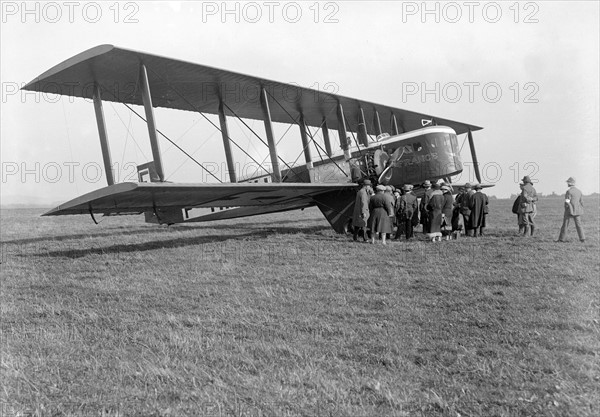
Sujet
Première Guerre Mondiale
Légende
This Farman F-60 Goliath France, a former French WW1 bomber, with its box-like fuselage, was eminently suitable for conversion into a 12 or 14 seat passenger airliner. Large picture windows were added making it one of the most successful early commercial aircraft.
In late January 1919 Henri Farman took journalists on a flight to demonstrate the possibilities of sophisticated air travel. It was a Farman, which flew the first regular international passenger service between Paris and Brussels on 22nd March 1919, although they had flown a Paris - London (Kenley) service on 8 February. This was not recognised as the passengers were military personnel and civil flying after WW1 was not yet permitted in Britain.
The Goliath initially designed in 1918 as a heavy bomber capable of carrying 1000 kg of bombs with a range of 1500 km. It was a conventional fixed-undercarriage biplane of wooden construction with canvas covering, powered by two Salmson Z.9 engines. It had a simple and robust, yet light structure. The wings were rectangular with a constant profile. Hollow wooden main wing spars were used for the first time.
It was undergoing initial testing when World War I came to an end and Farman realized there would be no orders for his design. Nonetheless he was quick to understand that the big, box-like, fuselage of the Goliath could be easily modified to convert the aircraft into an airliner. Commercial aviation was beginning to appear and was in need of purpose-built aircraft. Approximately sixty F.60 Goliath were built. *** Local Caption *** 4science - Academic / Education - 25/02/2010
Info+
Mirrorpix
Date
23 oct. 2008
Crédit
Photo12/Mirrorpix
Notre référence
MPX13A00_050
Licence
Droits gérés
Format disponible
35,0Mo (5,7Mo) / 35,5cm x 24,7cm / 4192 x 2918 (300dpi)